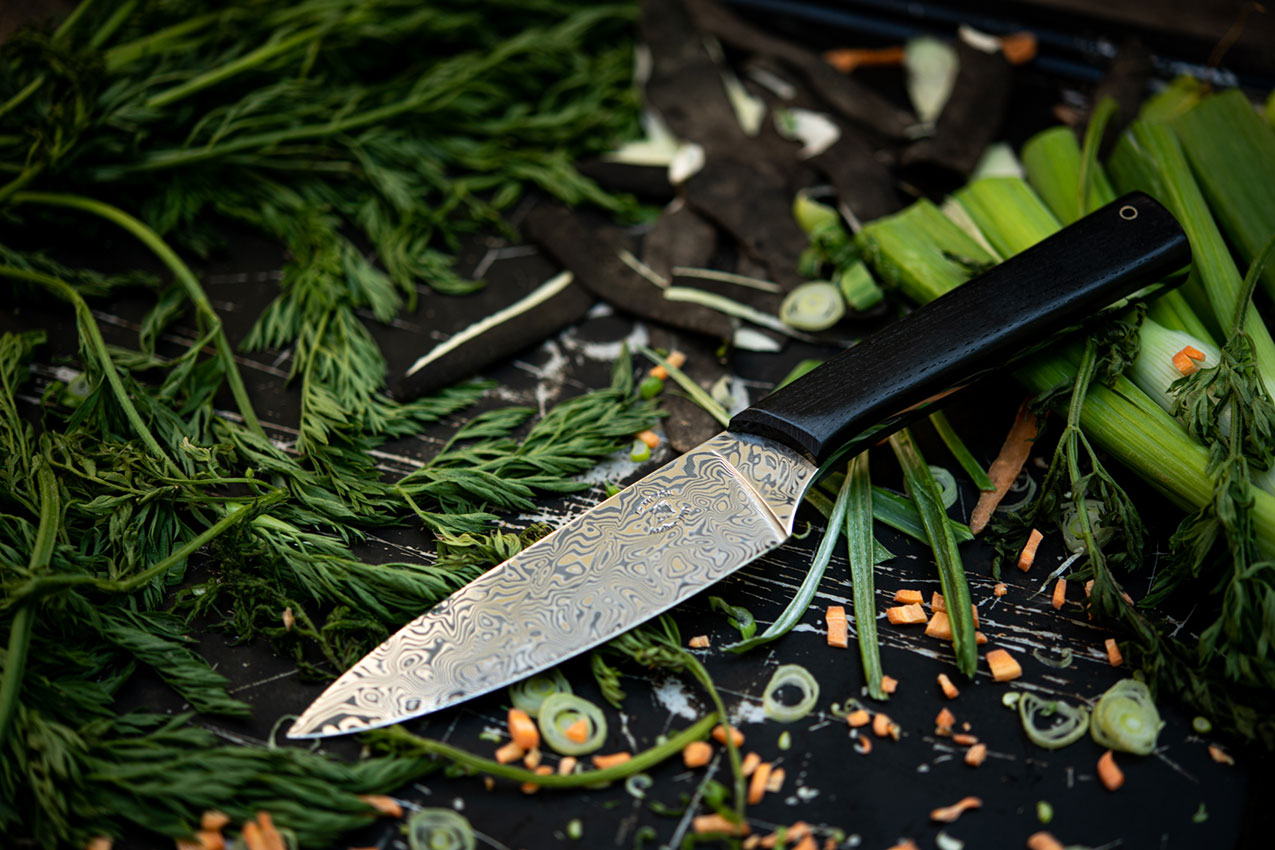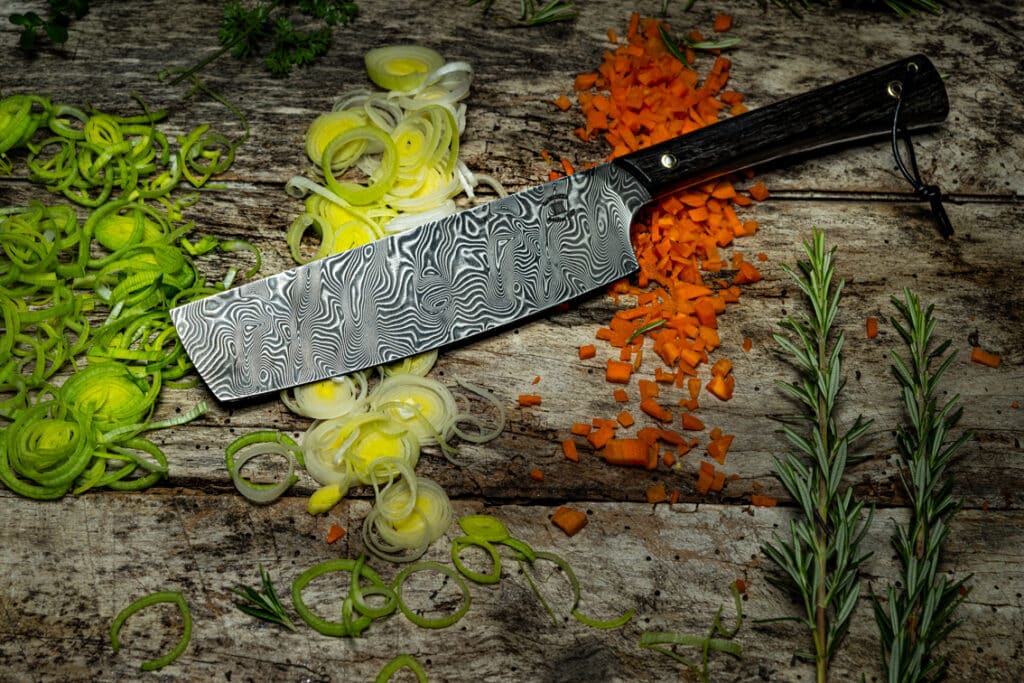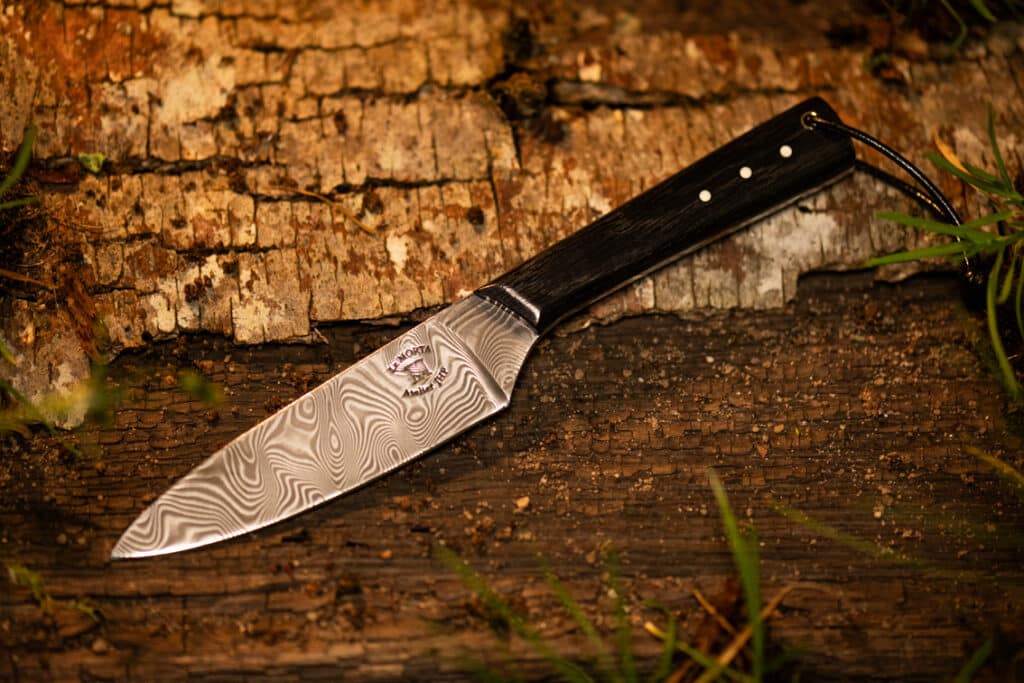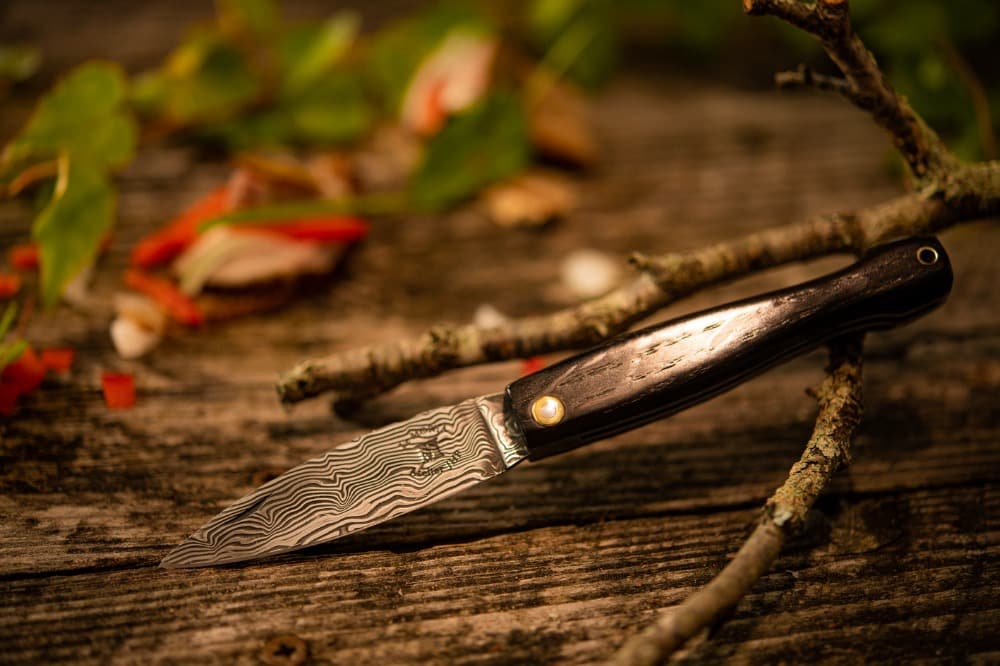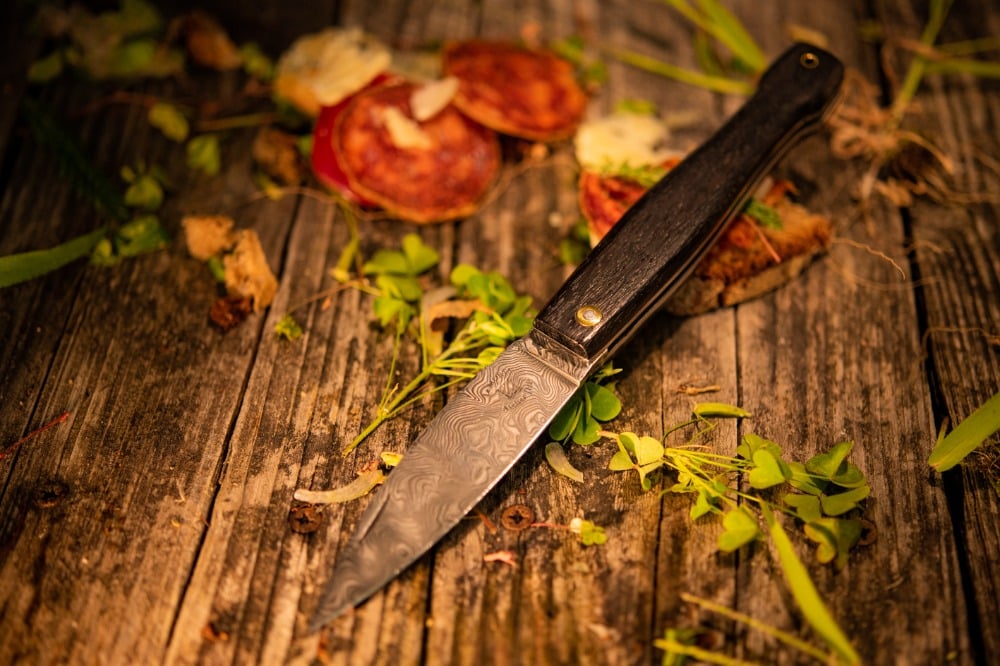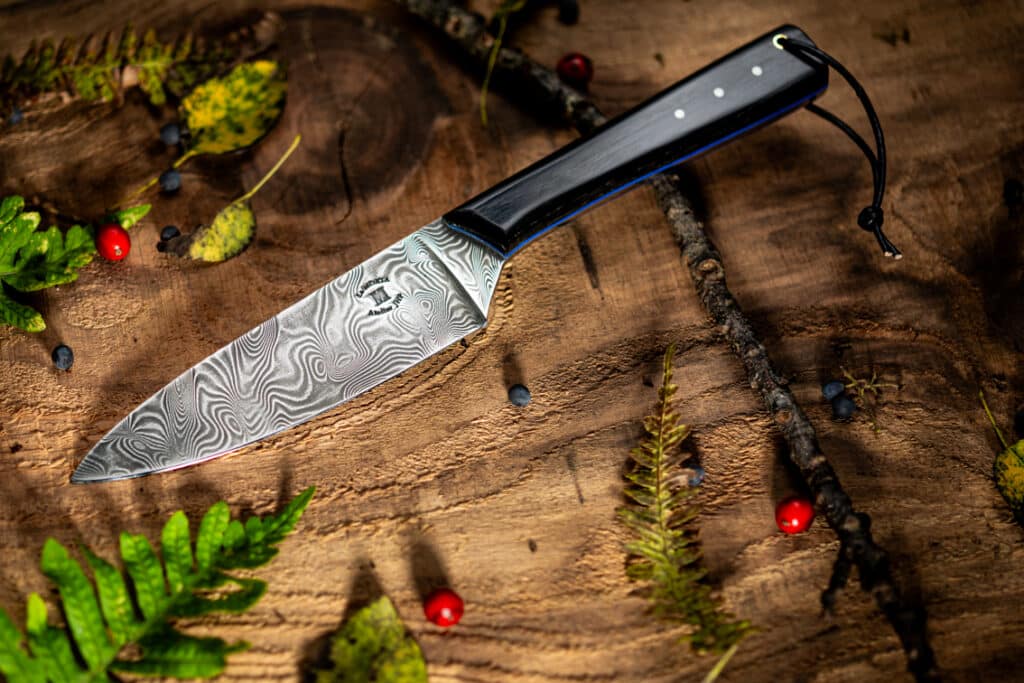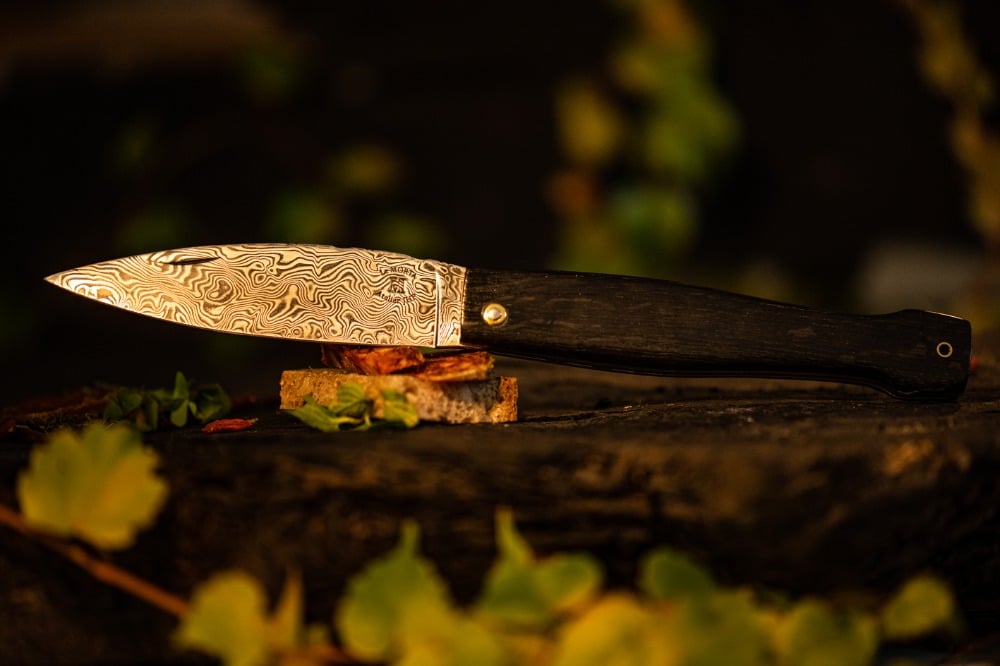Damascus steel, recognizable by its distinctive wavy pattern and known for its strength, has long been a symbol of mystery and mastery in the world of knives. Originating from Eastern civilizations, this steel has found its way into the kitchens of Michelin-starred chefs and the sheaths of experienced hunters. But as its popularity grows, a persistent question remains: how can you tell if a knife is made from genuine Damascus steel?
In a market flooded with replicas and fakes, distinguishing between a genuine Damascus steel knife and a fake can be a challenge. Price differences, pattern variations, and contradictory claims add to the confusion. This article aims to demystify Damascus steel, exploring its history, manufacturing methods, and providing practical tips for recognizing a genuine Damascus steel knife.
What is damascus steel?
Damascus steel has long been a symbol of mystery and refinement in the world of knives. But what makes this steel so special, and how is it made?
To begin with, let’s revisit the origins of this metal. Although Damascus steel takes its name from the city of Damascus, Syria, where it was first introduced, it’s important to note that the Damascus steel used by the Couteau Morta workshop is manufactured with RWL34 – PMC37 blades, which have a hardness of 59 HRC, thus guaranteeing exceptional quality and durability.
This type of steel is famous for its wavy pattern, which resembles waves or the flow of water. This pattern is not only aesthetically pleasing but also a testament to the quality and complexity of steelmaking.
What types of Damascus steel are there?
Wootz steel
The original damascus steel, known as Wootz, was introduced around the 3rd century. It was made by melting pieces of iron and steel in clay pots, a process that required great skill and constant attention to temperature.
Unfortunately, recreating the original Damascus steel is probably impossible today due to the specific composition of the soil and the chemical properties of the steel used in the region of origin.
Pattern-Welded steel
This type of Damascus steel, which accounts for 99.9% of all Damascus steel seen today, is created by forging and bending several complementary types of steel. This process is followed by acid etching to amplify the differences in the steel, creating a wavy pattern. This method was brought back to modern life by William Francis Moran Jr. (also known as Bill Moran), in the 1970s.
VG-10 Damascus
This is a variant where a VG-10 core is surrounded by Damascus steel on each side. The process is similar to that of San Mai (a traditional Japanese blade-forging technique), where three layers of steel are assembled.
How is a real damascus knife made?
The creation of a Damascus knife is a meticulous process that combines both ancient techniques and modern metallurgical advancements. At Couteau Morta, this process is given a unique touch, ensuring the production of knives that are not only functional but also pieces of art.
Here, we delve into the process that goes into making a Damascus knife at Couteau Morta:
1. Selection of Materials
The journey begins with the selection of high-quality materials. At Couteau Morta, the blades are crafted using RWL34 – PMC37 steel, known for its hardness of 59 HRC, which guarantees exceptional quality and durability.
2. Layering and Forging
The steel undergoes a layering process where several sheets of iron and steel are superimposed, then heated and forged together. This meticulous process is repeated several times, creating multiple layers that contribute to the distinctive wavy pattern and strength of the Damascus steel.
3. Sintering
The process of sintering is a modern technique that allows for the production of steel with an extremely fine and regular grain structure. This technique enhances the steel’s properties, offering excellent edge retention, ease of sharpening, better corrosion resistance, and high toughness.
4. Shaping and refinement
Once the steel is prepared, it is shaped into a blade, a process that demands precision and craftsmanship. The blade is then refined further, undergoing several stages of polishing to bring out the natural beauty of the Damascus patterns.
5. Acid etching
To accentuate the Damascus pattern, the blade undergoes an acid etching process. This step highlights the intricate patterns created during the forging process, giving the Damascus steel its unique and recognizable appearance.
6. Final touches
The final stage involves assembling the knife, where the blade is joined with a handle crafted to complement the beauty and functionality of the Damascus steel. At Couteau Morta, the handles are often crafted from exquisite materials, adding to the knife’s overall aesthetics and value.
Through this detailed process, a Damascus knife from Couteau Morta emerges as a perfect blend of art, history, and functionality, ready to offer an unmatched experience to both culinary enthusiasts and collectors alike.
How to recognize a genuine Damascus steel knife?
Recognizing a genuine Damascus steel knife can be a challenge, but there are signs that can help determine authenticity.
The acid test
By polishing a section of the blade until the pattern is no longer visible, then dipping it in an acid solution, the original pattern will reappear on genuine Damascus steel.
A fake damascus knife, on the other hand, will have a randomly marked surface.
Checking pattern consistency
A genuine Damascus steel knife will have uniform folds and patterns throughout the blade. Patterns should be consistent on the cutting edge, the spine, and even on the tang of the knife.
If the patterns appear to be simply “printed” or “engraved” on the surface, it could be an imitation.
Preconceived ideas about the authenticity of Damascus knives
The first common misconception is that if the Damascus pattern is not visible on every part of the knife, it must be fake. However, some parts of the knife, such as the spine or tang, can be polished, which can blur the pattern. It is therefore essential to consider other factors when assessing authenticity.
On the other hand, some people mistakenly believe that if a Damascus steel knife has undergone acidification treatment, it is not authentic. In reality, acidification is a common stage in the manufacture of damascus steel, used to highlight its distinctive patterns.
Why is Damascus steel special?
Damascus steel is more than just a knife-making material. It represents a combination of art, history and functionality that makes it unique and precious.
That’s why it’s widely appreciated for its exceptional properties, which make it ideal for a variety of uses, including cooking and hunting.
Indeed, both amateur and professional chefs appreciate damascus steel for its ability to maintain a sharp edge and for its resistance to corrosion.
What’s more, damascus steel knives are renowned for their strength and versatility. They can be used to skin game, cut wood, slice fruit and much more.
Their distinctive design also makes them attractive to collectors.
How do I care for a damascus blade?
As you can see, Damascus steel requires a certain amount of maintenance to maintain its appearance and performance. This includes :
- Sharpening: Damascus steel retains its edge well, but regular sharpening can help maintain its optimum performance.
- Cleaning: Proper cleaning and prompt drying are essential to prevent rust and maintain the lustre of the pattern.
- Oiling: The occasional application of oil can protect the blade from oxidation and maintain its appearance.
To conclude, understanding how to recognize a genuine damascus steel knife is not just a question of aesthetics, but also a recognition of craftsmanship, functionality and history.
At Couteau Morta, a commitment to quality and authenticity is at the heart of every piece. By choosing a damascus steel knife from a reliable source, you’re investing not only in a functional tool, but also in a tradition that has stood the test of time.


